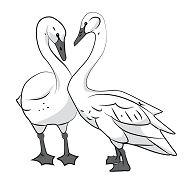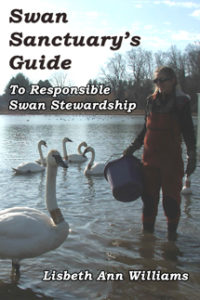String trimmers, better known as weed eaters, eat more than just weeds. They are usually operated by hands that know nothing about plants. It is just one more of man’s useless and ridiculous inventions made to control his environment. They are something that I detest even more than the prolific use of herbicides and pesticides. They are every bit as noisy as lawn mowers, rototillers, and the thousands of other motors that require gas and oil to run. They make electric ones, but if landscaping and gardening were done with even a modicum of common sense, it would be seen that they are entirely unnecessary. String trimmers, like a bomb in a war zone, are not selective about what they decimate. Anything taller than a couple of inches is certain to be destroyed. Any native flowers that may have been struggling to survive are wiped out every time they poke their heads above ground.
I have seen all too often, the demise of trees that have had their bark injured by string trimmers. In a short time insects and disease move in where the protective bark has been slashed open and the tree begins its slow decline. The weeds that crop up in the all too often used rock, that is prevalent in landscaping, are either weed- eated or sprayed profusely with Roundup®. The resulting carnage of plants is anything but esthetically pleasing to the eye. It doesn’t take a college degree to realize that using a string trimmer on weeds only makes them grow back stronger.
I have been digging beneath and on both sides of the chain link fence that encompasses my garden. Before I began making my garden, it was a huge rectangle of grass, dotted with a lot of bindweed and garlic mustard. There is no room in my life for monocultures of green grass. It offers nothing to wildlife and frankly, I find it boring. The garden beds that I am making along the fence perimeters will be a polyculture of climbing plants, annual and perennial flowers, with some herbs tucked in here and there. Within the rectangle of approximately 1200 square feet, I have created three large hügelkultur beds. They, too, will be filled with flowers, herbs, and vegetables. The areas along the fence will be heavily mulched, preventing most of the weeds and grass from returning. The remaining areas will be mulched paths for walking around and working in the growing areas. I get my mulch from the recycle center where it is given away free to residents. I can include stepping stones at a later time, if I choose. I will eventually work my way out from the fenced area, adding evergreens for the birds, as well as more shrubs – especially those with berries that birds love. There will be no areas at all that require a string trimmer!
If homeowners were required to send all of their plant debris to the recycle center where they turn it into mulch, that mulch could be used on the many public areas where poor attempts at landscaping have been implemented. Instead of paying cheap labor to go around with string trimmers, they could ensure that at least a five inch layer of mulch was maintained around all plantings and the laborers time could be better spent pulling the few weeds by hand, which in time, would eradicate them. Even herbicides do not permanently destroy weeds, so the bad chemicals must be sprayed time and time again. Gardening organically is easy. It is, needless to say, healthier for the planet and for us. We just need to stop supporting the billion dollar corporations that keep making things we do not need.



